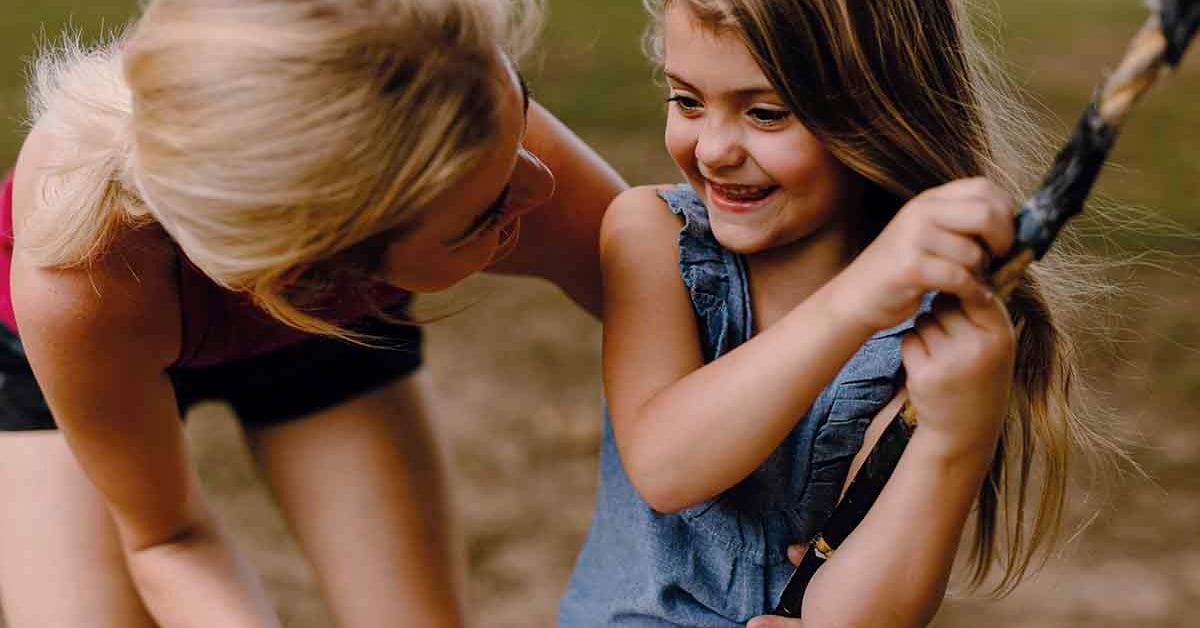Great benefits of the great outdoors
Dana Klisanin, PhD, is an award-winning psychologist who researches human rewilding: reconnecting with nature to disconnect from the modern digital world and the ways that technology and screen time damage growing minds and bodies.
“Outdoor play offers children a profound opportunity to form relationships with the more-than-human world―relationships that can support mental health, creativity, and resilience throughout their lives,” says Klisanin.
“Research shows that regular time in nature lowers stress hormones, enhances immune function, and improves mood―even the scent of trees and soil can have measurable calming effects on the nervous system.”
Specifically for kids and teens, outdoor play and nature exploration may boost cognition and learning, address the growing rise of behavioural issues in classrooms, and improve their mental health and emotional well-being.
More time outdoors may even help an array of additional health concerns, such as childhood obesity and chronic diseases, like asthma.
Walk the nature talk
“If kids see us scrolling on our phones all day, why would they want to go outside?” asks therapist Aja Chavez. “But if they see us gardening, going for walks, or just enjoying the back yard, they’ll start to see outdoor time as normal and even fun.”
Age-by-age outdoor inspiration
It’s not just about going outdoors―families need to find age-appropriate nature-based activities to motivate their children to get fresh air and exercise.
Young children (0 to 7)
Keep it short, playful, and sensory-rich. “Little ones are the easiest to motivate,” says child development expert and therapist Aja Chavez, LMFT. “Turn it into a game, like ‘exploring’ the back yard or collecting leaves.” Other ideas include building a back yard obstacle course, going on nature scavenger hunts, or cooling down at a local outdoor splash pad.
Pre-teens (8 to 12)
“It’s all about the social aspect,” says Chavez. “They’re much more likely to go outside if their friends are involved―think bike rides around the neighbourhood or pickup basketball games.”
Outdoor activities that encourage adventure and skill-building, such as paddleboarding or geocaching, are especially popular with this age group.
Teens (13+)
Link outdoor activities to personal development. “Respect their growing independence,” advises Chavez. “Instead of ordering them outside, try suggesting activities that align with their interests. Maybe they’d like to try skateboarding, or take their headphones for a walk, or set up a hammock to read in the fresh air.”
Your outdoor game plan
Not sure where to start? Whether you’re in rural BC or an urban centre in Ontario, these tips and tools will get your family plugged into nature instead of the television.
Put kids in charge
“The trick is to make outdoor time feel like their idea,” says Aja Chavez, LMFT. “Maybe start a family challenge to visit every park in town, or let them invite a friend along.”
Map out your next adventure
The Parks Canada app offers directions and self-guided tours of the nearest national park. Commercial resources like AllTrails and GaiaGPS guide you on off-the-beaten-path adventures. And Playground Buddy’s app provides tips and locations of nearly 400,000 playgrounds.
Stay young, wild, and safe
“Comfort and safety, while important, can have negative impacts if it’s not balanced with discomfort and a certain level of risk,” says child therapist Laurie Singer. Unstructured nature play with some risks―yes, scrapes and bumps may happen―builds confidence, motor skills, and social skills. But don’t forget the basics, including hydration, sunscreen, and bug spray.
Turn “no way!” into “yes, please!”
Don’t be alarmed if you ask your family to go outside to play and they don’t want to, at first. “Resistance to outdoor time is often mislabelled as laziness or disinterest, but often it’s a symptom of disconnection,” says Klisanin.
“Many kids―especially those growing up in screen-saturated or urban environments―don’t yet know how to be in nature. That’s why simple, repeated exposure matters―a weekly walk to the same park or a favourite tree to sit under. These seemingly small gestures become threads of relationship that slowly reweave the child’s sense of belonging to the living world,” Klisanin adds.
Her best tip? Frame nature time as a reward or a break and not as a chore—and start with yourself. “Share your own love for nature, like your memories of climbing trees or catching fireflies,” says Klisanin.
“When children feel they’re stepping into something meaningful―something ancestral, even sacred―they respond. If a child grows up watching the same tree bloom in spring, or feeding the birds outside their window, they’re learning to feel at home in the world. That’s a foundation we can’t afford to neglect.”
Then and now
In North America, sunscreens started being regulated by the US Food and Drug Administration in the 1970s. Sun protection factor (SPF) didn’t become the standard until the 1980s.
Today, Health Canada regulates sunscreens under the Food and Drugs Act as either non-prescription drugs or natural health products, depending on their active ingredients. Make sure you’re lathering your kids up before heading outdoors!
Vitamin D gets an A+ for children
Nearly a third of Canadians have insufficient levels of vitamin D, and kids are affected, too.
Benefits of vitamin D for kids and teens
Your child needs sufficient vitamin D for bone health, muscle growth, and immune function.
The sun and vitamin D connection
Vitamin D is known as the “sunshine vitamin” for a reason―healthy sun exposure from outdoor playtime gets your children this essential nutrient.
What to look for in supplements
As summer comes to a close, and you spend more time indoors, your family’s levels of vitamin D may drop. There are many vitamin D supplements available in kid-friendly formats, including liquid drops (ideal for infants) and gummies or tablets.
This article was originally published in the August 2025 issue of alive magazine.



